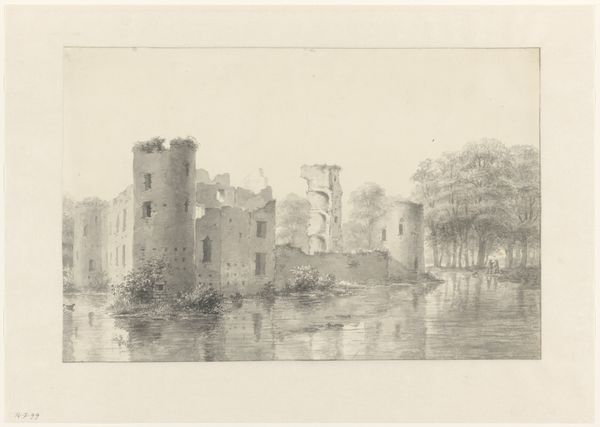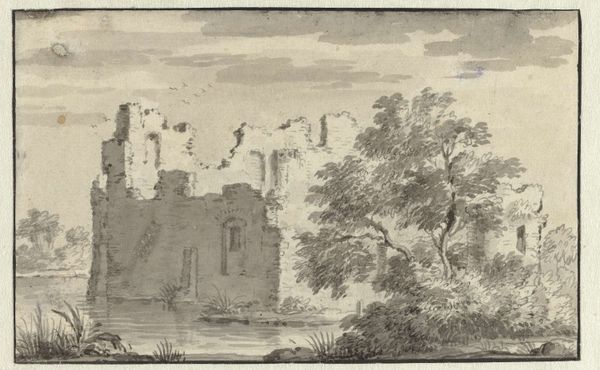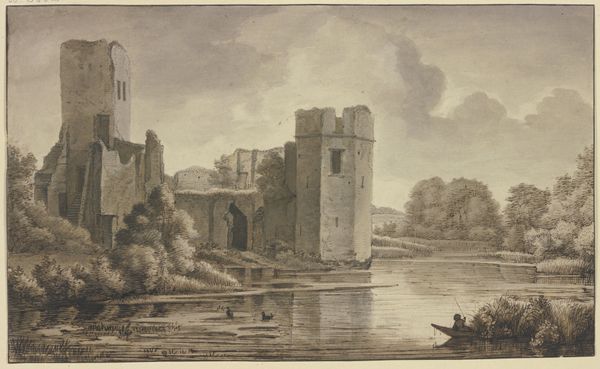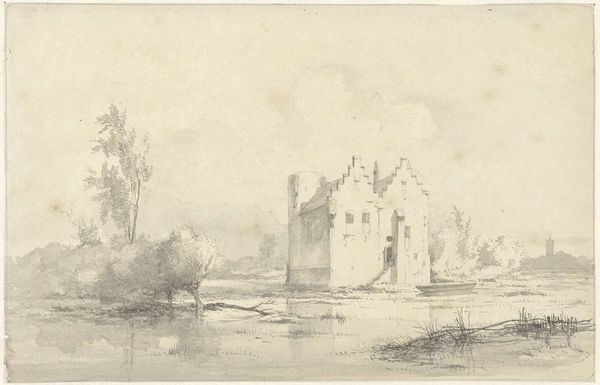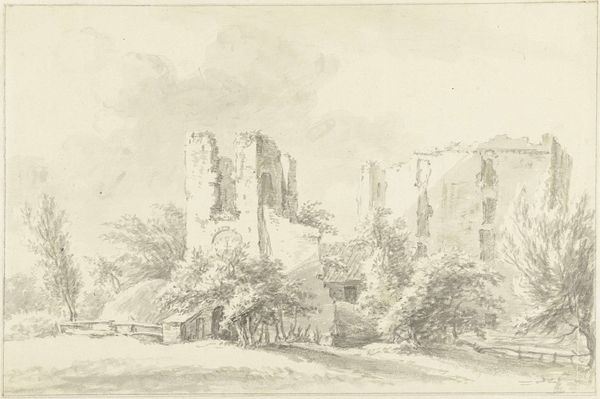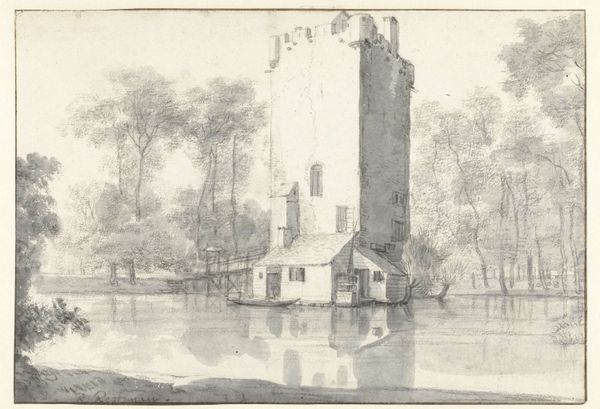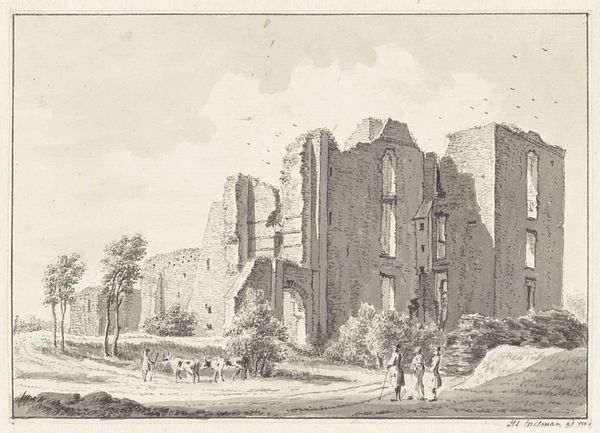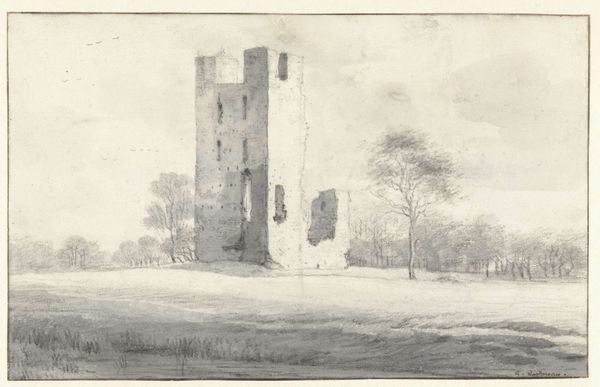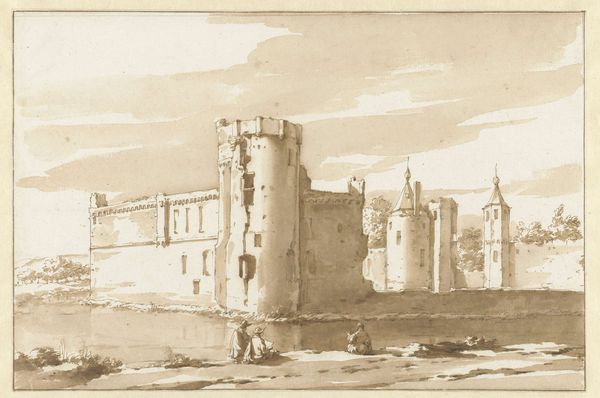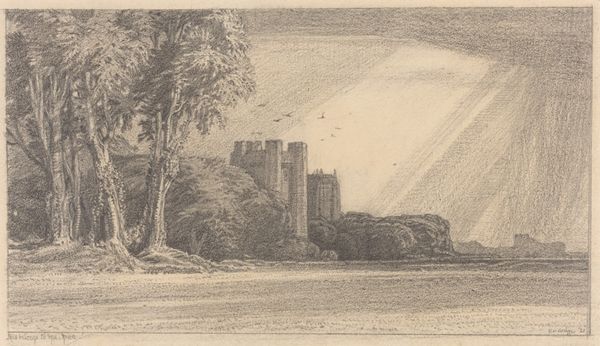
drawing, pencil
#
pencil drawn
#
drawing
#
dutch-golden-age
#
pencil sketch
#
landscape
#
charcoal drawing
#
pencil drawing
#
pencil
#
cityscape
#
realism
Dimensions: height 333 mm, width 543 mm
Copyright: Rijks Museum: Open Domain
Curator: This compelling pencil drawing is entitled "Ruins of Honingen Castle near Rotterdam" and was created around 1646-1647 by Roelant Roghman. Editor: Immediately, I’m struck by the somber atmosphere. The ruins loom so heavily on the horizon—there's a quiet devastation present in this seemingly straightforward depiction of landscape. Curator: Yes, Roghman excelled at imbuing scenes with a sense of cultural memory. While it appears a simple, topographical study at first glance, we must consider the symbolism of ruins during the Dutch Golden Age. Ruins were potent reminders of the transience of worldly power. The skeletal remains of the castle echo not only its physical absence, but a former sociopolitical structure that no longer persists. Editor: Absolutely, it's impossible to separate this image from its sociopolitical backdrop. What might a destroyed castle represent in a time of emergent capitalist infrastructure? We should consider this imagery as being firmly connected to larger conversations about power, the fallout from imperial ventures, and the very real consequences of progress. Beyond the image, it invokes philosophical themes on mortality, and decay, as potent metaphors to suggest all power is fleeting. Curator: Roghman frequently revisited such motifs, finding continuity in cycles of creation and collapse. It also speaks to ideas about collective memory, and how societies negotiate the relationship between remembering and forgetting the past. It shows our innate capacity to both revere history but move onward, constructing fresh ideologies. Editor: Agreed. Roghman’s artistic rendering is deeply interwoven with sociopolitical forces. Here, the meticulous detailing of decline, etched onto the drawing medium, is so captivating precisely because we're bearing witness to that transitional stage, where past and present intersect on this plane. It is not purely architectural observation; it is a pointed commentary on what "progress" truly costs. Curator: It’s a poignant study that makes us reflect on permanence, or rather, the absence of it. Editor: The image lingers because it provokes the critical question: what markers will *we* leave behind in this rapidly shifting cultural and ecological landscape?
Comments
rijksmuseum over 2 years ago
⋮
Roghman rendered the ruins of Honingen Castle with delicate black chalk lines and loose grey wash applied with a brush. He succeeded in merging its remains into the picturesque landscape. The castle suffered much damage during the Eighty Years’ War against the Spanish. The domain was bought by the city of Rotterdam, and the dilapidated castle was torn down in 1672.
Join the conversation
Join millions of artists and users on Artera today and experience the ultimate creative platform.
